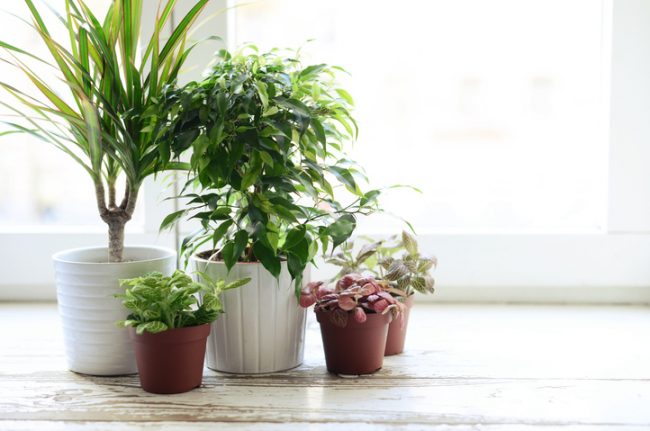Aaah, home, a place to take a deep breath.
But the air inside your house could be more polluted than city air because of chemicals coming from furniture, carpets and synthetic materials, according to the Environmental Protection Agency.
Turns out houseplants can suck up that bad stuff. They wick away airborne chemicals and the carbon dioxide we puff out, then give us oxygen, research from NASA has shown.
Plants also make people feel good. Caring for plants boosts the happy factor even more. Growing plants can improve memory and cognitive abilities, according to the American Horticultural Therapy Association.
Some houseplants can clean the air, but experts say any kind of leafy friend helps.
Here are four easygoing plants great at absorbing pollution, along with tips on what (little) they need to live. They do just fine in average home conditions: temperatures of 60 to 75 degrees Fahrenheit and humidity levels of 35 to 65 percent (most do best at 50 percent).
Our list is based on recommendations from B.C. Wolverton, who led NASA air studies, and Ortho Books’ “Complete Guide to Houseplants,” a resource replete with photos and care instructions for more than 200 plants.
1. Peace Lily (Spathiphyllum wallisii)
Very pretty if the white flowers bloom, this elegant plant is especially great at absorbing benzene, formaldehyde and trichloroethylene.
Light: Medium to bright. Does okay in low light but might not bloom.
Water: Keep soil moist when it’s flowering, but otherwise let soil dry a bit between waterings.
2. Pothos (Epipremnum aureum)
I do not exaggerate when I say this thing can live for a very long time in dark to bright conditions and in the same pot. I had one plant that got along swimmingly, in conditions just as described, for more than a dozen years.
Light: Low to bright. Fuller with better color, if it’s not in darker conditions.
Water: Consistently moist soil is best, but it’ll be okay if it gets dry sometimes (mine sure did).
3. Snake Plant or Mother-In-Law’s Tongue (Sansevieria trifasciata)
This hardy-looking plant has erect, strong leaves that shoot upright. It especially likes to gives off oxygen at night and will live for a year or more even if neglected.
Light: Medium to bright – but it can last a long time in low light.
Water: Let soil dry slightly between waterings, and then water as soon as soil is dry.
4. Spider Plant (Chlorophytum comosum)
Looks a lot like it sounds, with plantlets that hang down (and can easily be potted to create more plants). Gained fame when NASA released research showing how good it was at removing formaldehyde from the air.
Light: Low to bright. Better if it has decent light, though.
Water: Keep evenly moist.
Plant-care tips
Fertilizer: Plants do well with some fertilizer and experts recommend it, though I’ve never fertilized mine, and they’ve lived for years. Opt for organic fertilizers because they gently boost your plant.
Light: Natural sunlight is best because it has all the colors of the spectrum. Plants make best use of blue/violet (good for foliage) and red light (good for blooming) – which are at opposite ends.
Low light means enough light to read. No houseplant thrives in very low light, but it can get along. Medium light is average light, without direct sun. Bright light can include a few hours of direct sunlight – right in front of a window, for example – but better to have the light be bright without the sun right on a plant, for those listed above.
Water: Check soil by touching it. If a plant needs moist soil, the surface should be damp. If it needs dry soil, the top inch or so should be dry. It’s usually best to pour water on the soil then let it drain, though in some cases – the spider plant, for example – soaking works better. Tips on how long to let plants sit in water vary, from 20 to 60 minutes, and can depend on what’s in your water and soil.
Learn more about journalist Mitra Malek at www.mitramalek.com.

